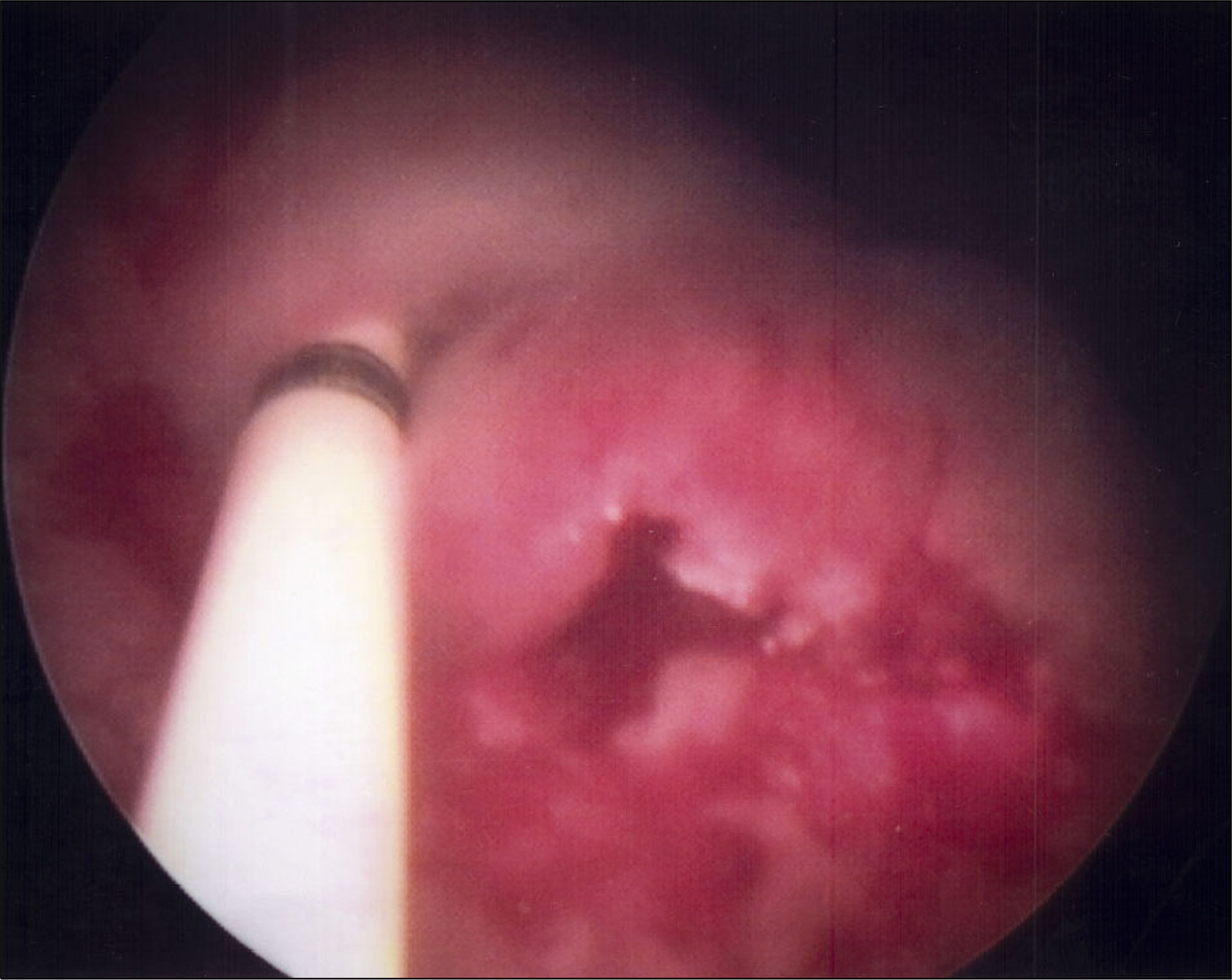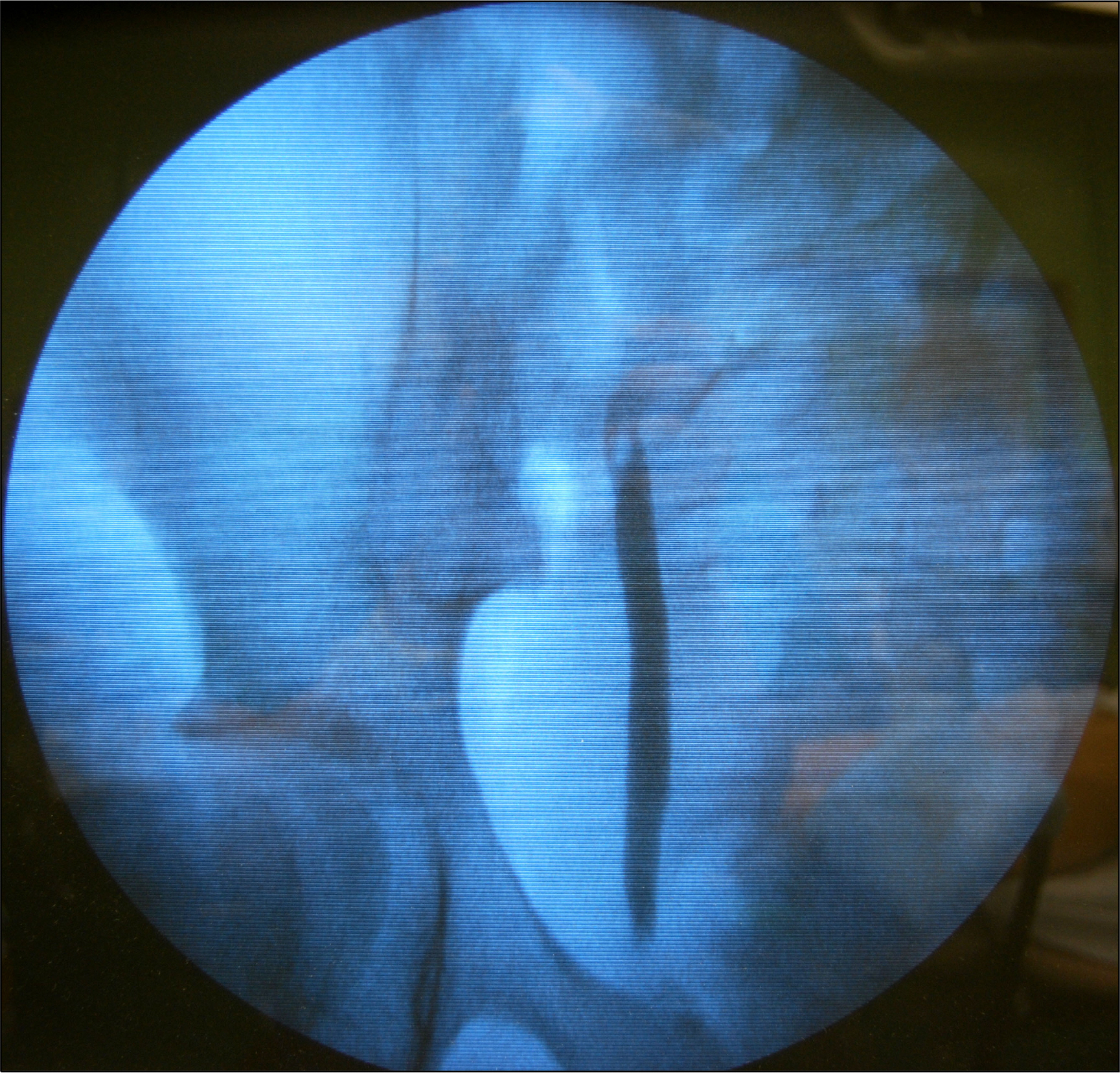Urogenit Tract Infect.
2016 Aug;11(2):62-65. 10.14777/uti.2016.11.2.62.
Recurrent Urinary Tract Infection by Bladder Stone Resulting from Subureteral Injection Polydimethylsiloxane (Macroplastique®) for Treatment of Vesicoureteral Reflux
- Affiliations
-
- 1Department of Urology, Yeungnam University College of Medicine, Daegu, Korea. sph04@hanmail.net
- 2Department of Urology, Kyungpook National University School of Medicine, Daegu, Korea.
- 3Department of Pediatircs, Yeungnam University College of Medicine, Daegu, Korea.
- KMID: 2350758
- DOI: http://doi.org/10.14777/uti.2016.11.2.62
Abstract
- While endoscopic subureteral injection of bulking agents has become a first-line therapy for the treatment of vesicoureteral reflux (VUR), mainly due to its high success rates with minimal complications, polydimethylsiloxane (PDS) administration can be associated with bladder calcification in a minority of patients. A 10-year-old girl with prior history of subureteral administration of PDS as a treatment modality for bilateral VUR six years ago showed recurrent lower urinary tract symptoms, including dysuria, frequency, and urgency, for the past 6 months. She was admitted to our institution for right pyelonephritis with hydronephrosis. Radiologic examination had revealed two yellowish impacted stones attached to the previous site of PDS administration without recurrence of VUR. The stones were completely removed by cystolitholapaxy. This study suggests that such a late-complication should be considered in patients with recurrent urinary tract infection or lower urinary tract symptom despite complete disappearance of VUR by prior subureteral administration therapy.
MeSH Terms
Figure
Reference
-
1.van Capelle JW., de Haan T., El Sayed W., Azmy A. The long-term outcome of the endoscopic subureteric implantation of polydimethylsiloxane for treating vesico-ureteric reflux in children: a retrospective analysis of the first 195 consecutive patients in two European centres. BJU Int. 2004. 94:1348–51.
Article2.Aboutaleb H., Bolduc S., Upadhyay J., Farhat W., Bagli DJ., Khoury AE. Subureteral polydimethylsiloxane injection versus extra-vesical reimplantation for primary low grade vesicoureteral reflux in children: a comparative study. J Urol. 2003. 169:313–6.
Article3.Elder JS., Diaz M., Caldamone AA., Cendron M., Greenfield S., Hurwitz R, et al. Endoscopic therapy for vesicoureteral reflux: a meta-analysis. I. Reflux resolution and urinary tract infection. J Urol. 2006. 175:716–22.
Article4.Bae YD., Park MG., Oh MM., Moon DG. Endoscopic subureteral injection for the treatment of vesicoureteral reflux in children: Polydimethylsiloxane (MacroplastiqueⓇ) versus Dextranomer/Hyaluronic Acid Copolymer (DefluxⓇ). Korean J Urol. 2010. 51:128–31.5.Capozza N., Caione P. Dextranomer/hyaluronic acid copolymer implantation for vesico-ureteral reflux: a randomized comparison with antibiotic prophylaxis. J Pediatr. 2002. 140:230–4.
Article6.Solomon LZ., Birch BR., Cooper AJ., Davies CL., Holmes SA. Nonhomologous bioinjectable materials in urology: ‘size matters'? BJU Int. 2000. 85:641–5.
Article7.Lakgren G., Wahlin N., Skoldenberg E., Stenberg A. Long-term followup of children treated with dextranomer/hyaluronic acid copolymer for vesicoureteral reflux. J Urol. 2001. 166:1887–92.8.Puri P., Chertin B., Velayudham M., Dass L., Colhoun E. Treatment of vesicoureteral reflux by endoscopic injection of dextranomer/hyaluronic acid copolymer: preliminary results. J Urol. 2003. 170:1541–4.
Article9.Al-Hunayan AA., Kehinde EO., Elsalam MA., Al-Mukhtar RS. Outcome of endoscopic treatment for vesicoureteral reflux in children using polydimethylsiloxane. J Urol. 2002. 168:2181–3.
Article10.Smith DP., Kaplan WE., Oyasu R. Evaluation of polydimethylsiloxane as an alternative in the endoscopic treatment of vesicoureteral reflux. J Urol. 1994. 152:1221–4.
Article
- Full Text Links
- Actions
-
Cited
- CITED
-
- Close
- Share
- Similar articles
-
- An Experience of Endoscopic Polydimethylsiloxane Injection for the Treatment of Vesicoureteral Reflux in Children
- Bladder Stone after Intraureteral Polydimethylsioxane (Macroplastique) Injection Therapy in Vesicoureteral Reflux Patient
- Endoscopic Subureteral Injection for the Treatment of Vesicoureteral Reflux in Children: Polydimethylsiloxane (Macroplastique(R)) versus Dextranomer/Hyaluronic Acid Copolymer (Deflux(R))
- Experience of Subureteral Polydimethylsiloxane Injection Treatment in Children with Vesicoureteral Reflux
- Bilateral Diverticula with Recurrent Urinary Tract Infection





